views
Protecting Your Hair When Re-Dyeing
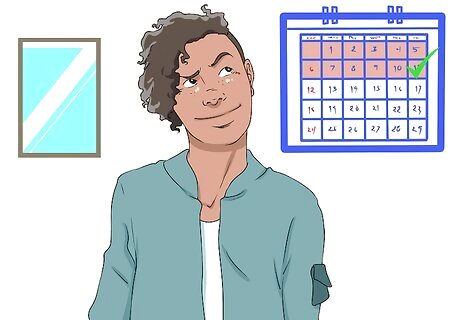
Wait at least two weeks before applying another color. Applying dye again too soon after coloring your hair can cause extensive damage and breakage. Additionally, you will have no way to predict how the color will look, since you’re dyeing over an existing dye-job. The example color on the box will not be applicable on top of dye. Keep in mind that color doesn't lift color. You won't be able to go from a dark dyed color to a lighter color without using bleach or some form of a color correction process first. Generally, it’s best to wait four to seven weeks before re-dyeing your hair so that you don’t damage it, but you can try to dye it earlier if you really hate your current dye-job. If you’re re-dyeing just to have a change, wait at least four weeks to apply the new color. If you simply need to adjust the tone, go to a professional that can assess when's the best time to make the color correction without damaging your hair.
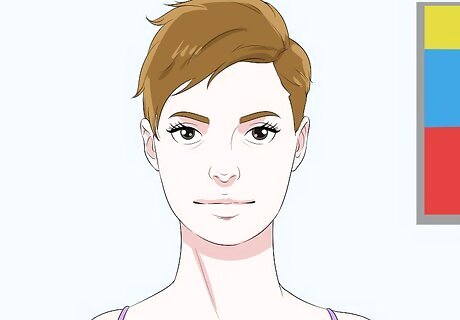
Choose a darker shade for a better result. It’s easier to darken your hair than it is to lighten, so a darker shade is more likely to absorb into already dyed hair. It’s also less damaging to your hair than a bleach would be. Since you’re already on your second process, avoiding additional damage is a must. If you must lighten your hair, visit a stylist. Trying to re-dye your hair a lighter shade will most likely come out wrong and cause extensive damage to your hair.
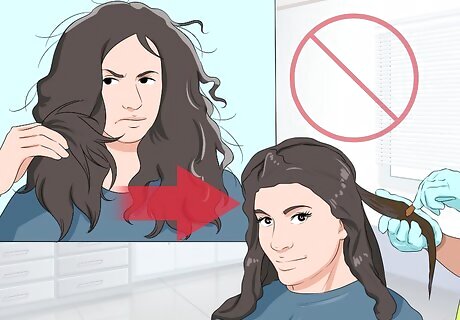
Avoid re-dyeing if your hair is severely damaged. Hair that is dry, breaking, or has excessive split ends needs a break from processing. No matter how much you want to change up your look, applying dye to damaged hair will only make it look worse. Instead, apply a deep conditioner and make an appointment with a stylist, who can help you determine when and if you can safely re-dye your hair. Signs you have damaged hair include split ends, loss of bounce, excessive tangles, and dry, brittle strands.
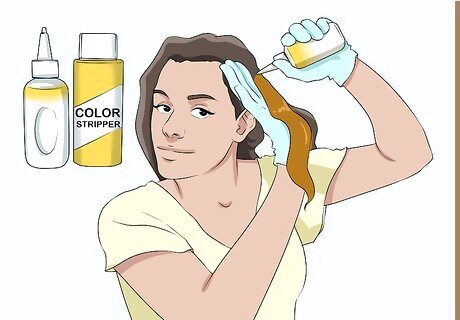
Use a color-stripping product to remove unwanted color. You may want to remove the old color before you try to re-dye your hair, especially if you’re making a big change. These products remove dye already on your hair so that the new color can absorb into your hair. Using a color-stripper will allow you to make bigger changes in your hair color because you can start fresh. Otherwise, you will be applying dye on top of dye, which can make it harder to get the color you want. You can find an at-home color stripper at a beauty supply store, or you can visit a salon to have a professional treatment applied.
Preparing Your Hair
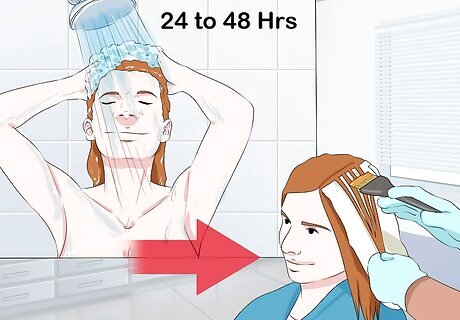
Wash your hair 24 to 48 hours before you plan to color. Your natural hair oils need time to build up on your scalp, so wait a day after washing your hair to apply the dye. The natural oils will protect your scalp and help the color absorb into your hair.
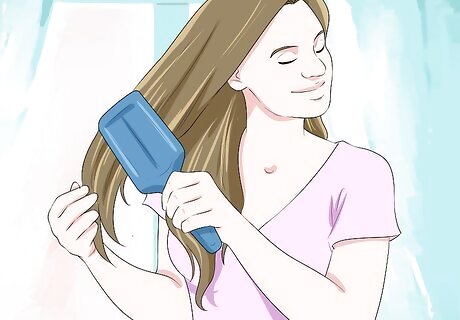
Brush your hair to remove tangles and build-up. Run the brush through your hair for a few minutes before you apply the product. You need to remove tangles and excess hair product so that your hair dyes evenly. Your hair should be dry when you apply the dye.
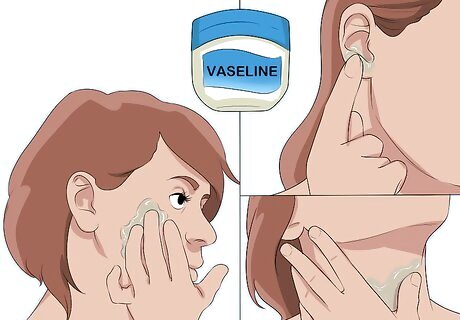
Apply vaseline around your hairline. Vaseline will help prevent the dye from staining your skin. You should use it on your face, ears, and neck. A thin layer is all you need to protect your skin.
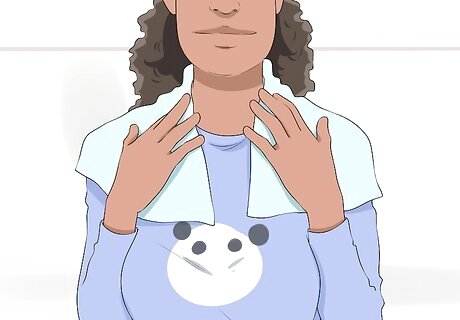
Wrap a towel around your neck. The towel will protect your clothes and skin from the dye. Secure the towel with a clip or rubber band so that it doesn’t come off while you’re in the middle of applying the product. Choose an old towel or one that is dark colored because the towel will most likely be stained by the hair dye. Lift your arms up to your hair a few times to make sure that the towel is secure and won’t fall off while you're in the middle of dying your hair. Alternatively, you could use a hairdresser's cape if you have one.
Coloring Your Hair
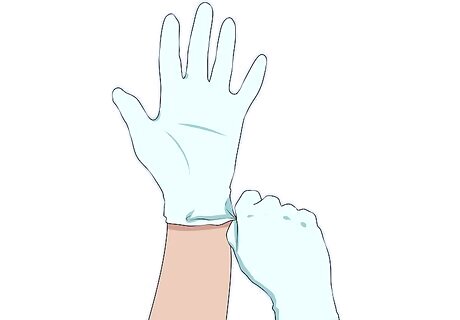
Put on gloves. You should wear gloves anytime you handle chemicals, such as those in hair dye. The gloves will protect your skin from chemical damage and staining. Nitrile gloves are the most chemical resistant. Most boxes of dye come with gloves.
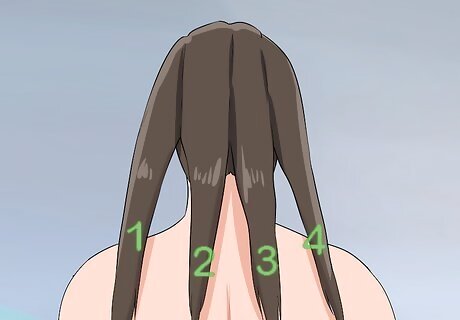
Separate your hair into four even sections. Sectioning your hair will allow you to apply the product evenly so that your hair doesn’t come out patchy or streaky. Use hair clips to pin the hair into four even sections.
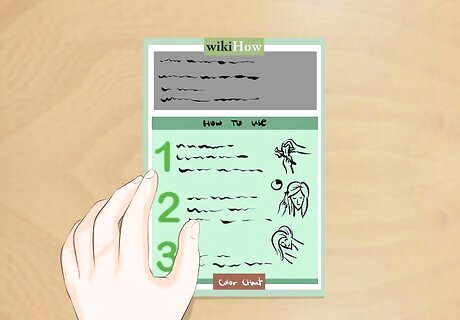
Mix the dye according to the box. Following the instructions will help you use the product safely. Wait until you're ready to apply the product before you mix it. Read all of the instructions before you get started so that you won’t skip any steps. You should also know how long your color will need to set before you put it on.
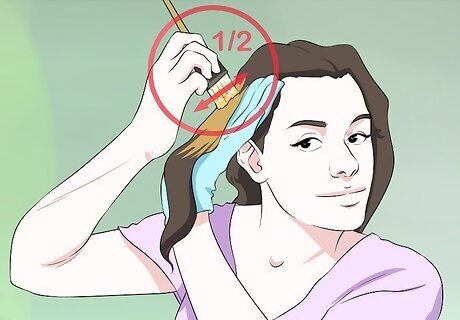
Apply the dye to the sections. Start about ½-inch from your scalp and work your way through your hair. Coat your hair with the dye so that each section is completely covered. Continue applying the dye until each section is covered with dye. When you're finished, cover your hair in a shower cap if you have one. If you use a shower cap, it will hold in your body's natural heat, which helps the dye absorb faster.
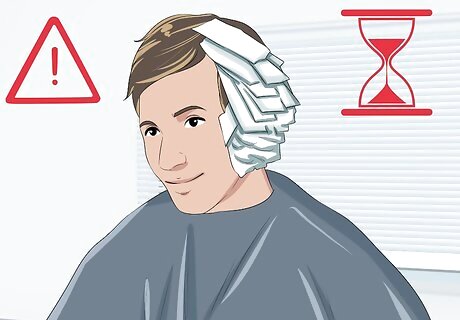
Allow the dye to set for the recommended time. Set a timer to make sure that you don’t leave the dye on too long. Don’t let the dye stay on too long because it can damage your hair. If you’re covering gray, let your hair set for the longest amount of time allowed.
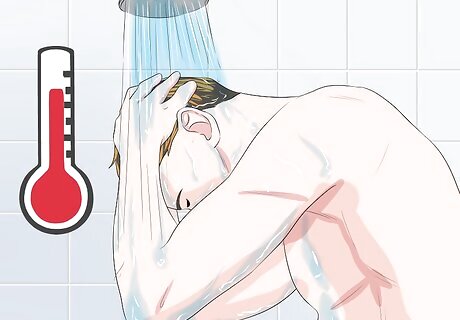
Rinse out the dye using warm water. Avoid using shampoo since it can leach out some of the color. Instead, wait until the water runs clean, then apply a color-safe conditioner and rinse it out with cool water. Most dye kits come with a conditioner that you can use to add moisture back to your hair.
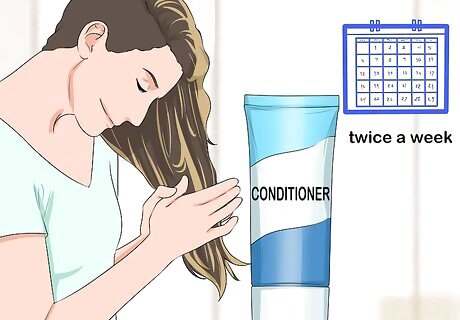
Use a deep conditioner every few days. Since your hair has been dyed twice, it needs extra nourishment. A deep conditioner twice a week can help restore your hair’s moisture after it’s been depleted by repeated dye-jobs.
Re-Dyeing Your Hair the Same Color
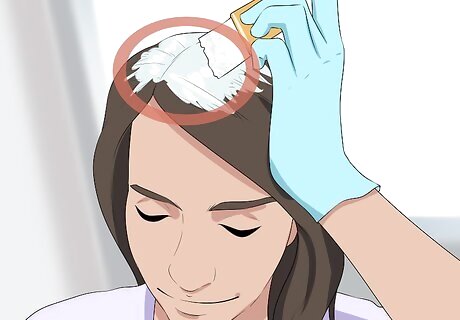
Dye your roots only. Applying the dye to hair that you’ve already colored can cause the color to darken and your hair to become brittle from over treatment. Start applying the product on your scalp and work your way until you reach the end of the new growth. Leave the ends of your hair untreated. Don't stress out about a little bit of overlap where the new growth ends. That hair is still fresh and won't be as porous as the hair near the ends, meaning that it won't absorb as much color.
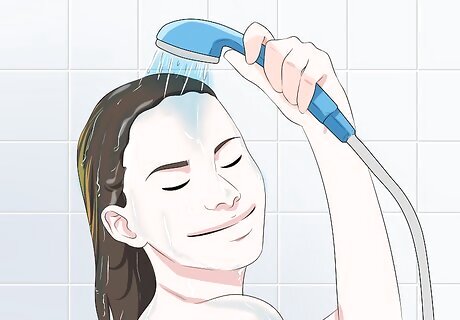
Wet your hair when it’s time to wash it out. When your timer goes off and it's time to rinse, add a little water to your hair to slightly moisten the dye. However, don't remove it yet.
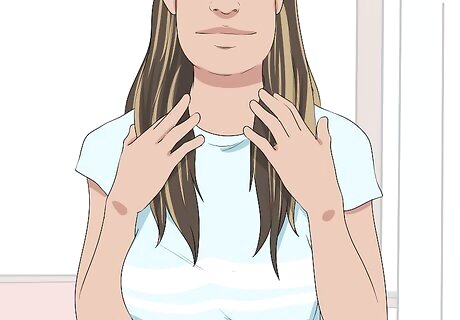
Massage the color through your hair. Use your fingers to pull the color through the ends of your hair. Gently squeeze your hair to re-activate the dye, bringing it down through your ends. This works well to refresh your color when you're reapplying the same shade, but it won't darken your hair. If you want your hair darker, you'll need to leave the dye on your hair for at least 20 minutes.
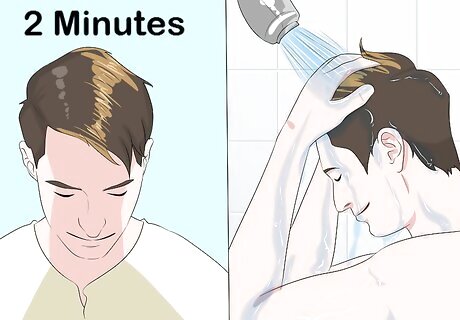
Rinse out the dye after two minutes. Use warm water to cleanse away the dye. Continue rinsing until the water runs clean. Use a color-safe conditioner to restore moisture to your hair. Most kits include a conditioner for you to use after you dye your hair. Avoid shampooing your hair for 72-hours after dyeing.
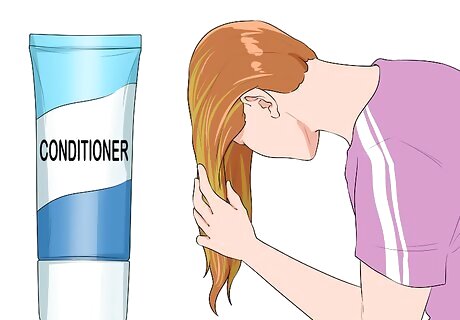
Apply conditioner to your ends if you’ve dyed your hair often. If you don't need to refresh the color on your ends and are afraid that they will darken when you do your roots, apply conditioner to the bottom of your hair so that the dye can't absorb. This will help you preserve your color on the part of your hair you want to avoid dyeing.
Visiting a Stylist
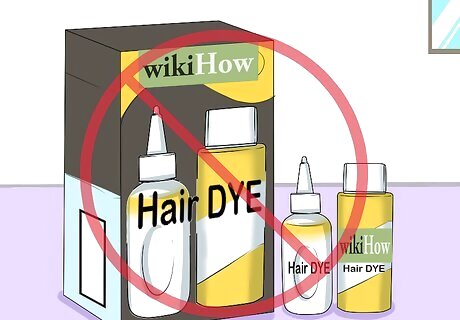
Avoid using boxed hair dye over a professional dye job. Boxed dyes are more drying than professional dyes, so they will increase the damage on your hair. Not only that, but the compounding of color can make it hard to predict the results. Once you’ve added the boxed dye, it will be hard for anyone to fix your hair color if you don’t like the results. Your stylist may be able to gently change the color by applying a toner rather than re-dying it, so talk to them before you try anything drastic.

See a stylist if you’ve already tried to re-dye your hair once. If you’ve already tried to re-dye your hair once and don’t like the result, don’t try another home dye job. This could damage your hair, and the color won’t come out right since you already have two dyes on your hair.

Tell your stylist that you’ve already colored your hair. Provide your stylist with a complete hair history so that they can give you good advice on how to proceed. If you don’t tell your stylist that you’ve already used dye, your hair may not come out as expected. Trust your stylist to help you make the best choice to keep your hair healthy. Tell them how many times you’ve dyed your hair, as well as how often. Say, “I’ve already used two different box dyes. I put the first one on three weeks ago, and last week I tried to fix the color.” Explain what you don’t like about your current color so that they can help fix the issue you’re having. Say, “I don’t like how brassy my hair looks.”


















Comments
0 comment